IMAT2404 - UML Diagrams in Object-Oriented Systems Analysis & Design
VerifiedAdded on 2023/06/18
|22
|2366
|209
Report
AI Summary
This assignment provides a comprehensive analysis of object-oriented systems using UML diagrams. It includes a use case diagram for a hotel management system, a state machine diagram analyzing booking class behavior, and a sequence diagram illustrating object interactions in a library management system. Additionally, it presents an activity diagram for a sales order processing system. The document discusses design consequences, state patterns, and collection classes, offering a detailed exploration of system design principles. Find more solved assignments and past papers on Desklib.
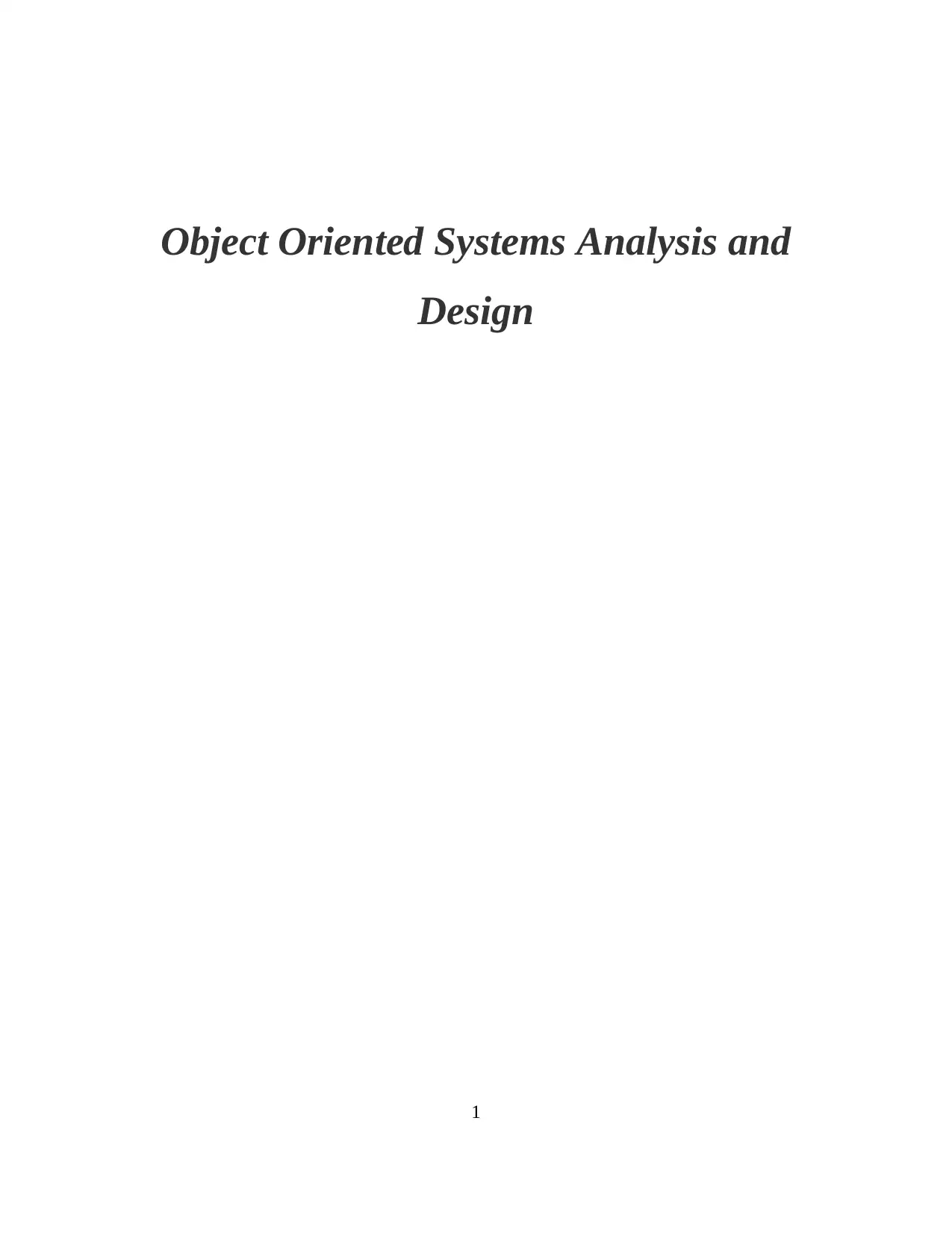
Object Oriented Systems Analysis and
Design
1
Design
1
Paraphrase This Document
Need a fresh take? Get an instant paraphrase of this document with our AI Paraphraser
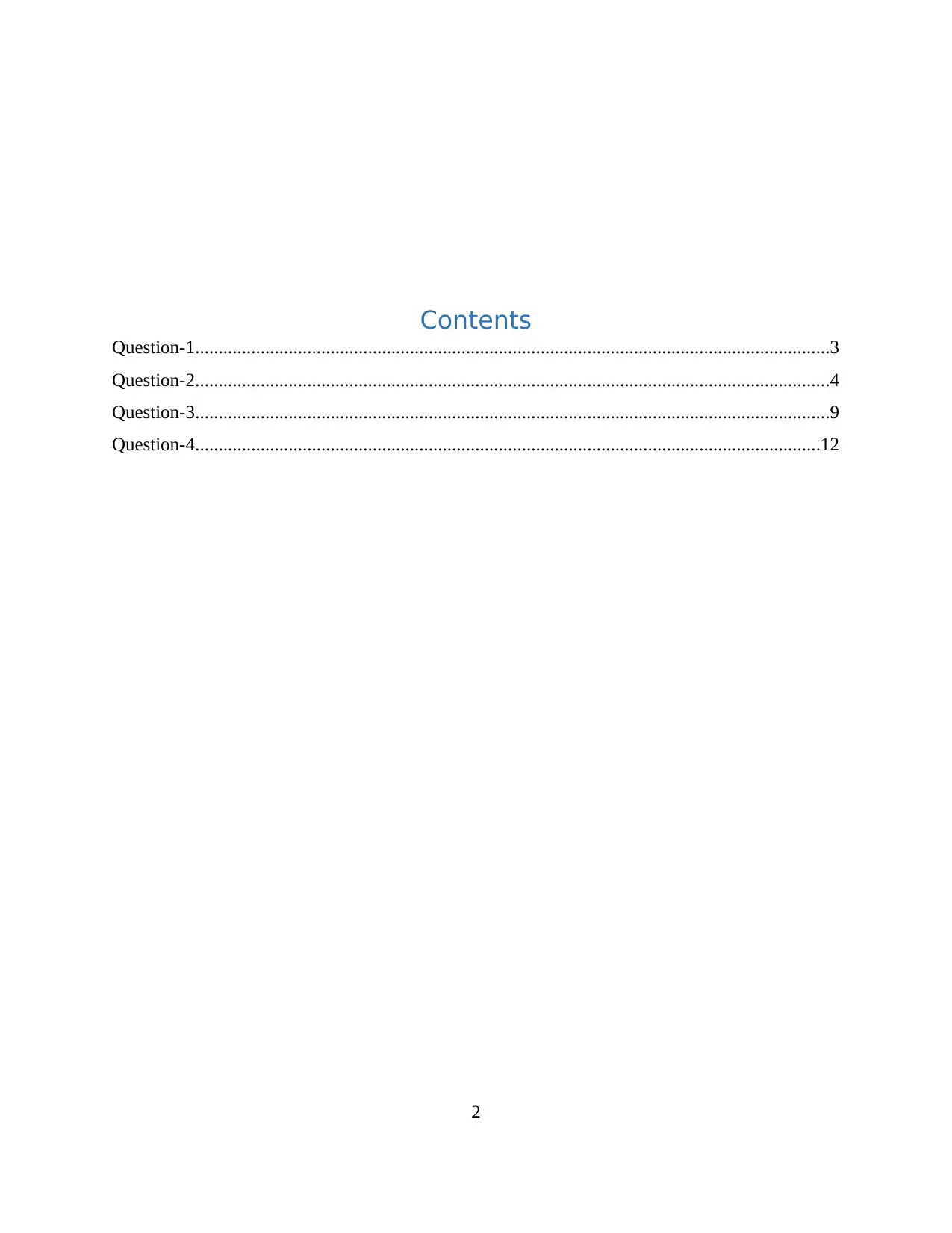
Contents
Question-1........................................................................................................................................3
Question-2........................................................................................................................................4
Question-3........................................................................................................................................9
Question-4......................................................................................................................................12
2
Question-1........................................................................................................................................3
Question-2........................................................................................................................................4
Question-3........................................................................................................................................9
Question-4......................................................................................................................................12
2
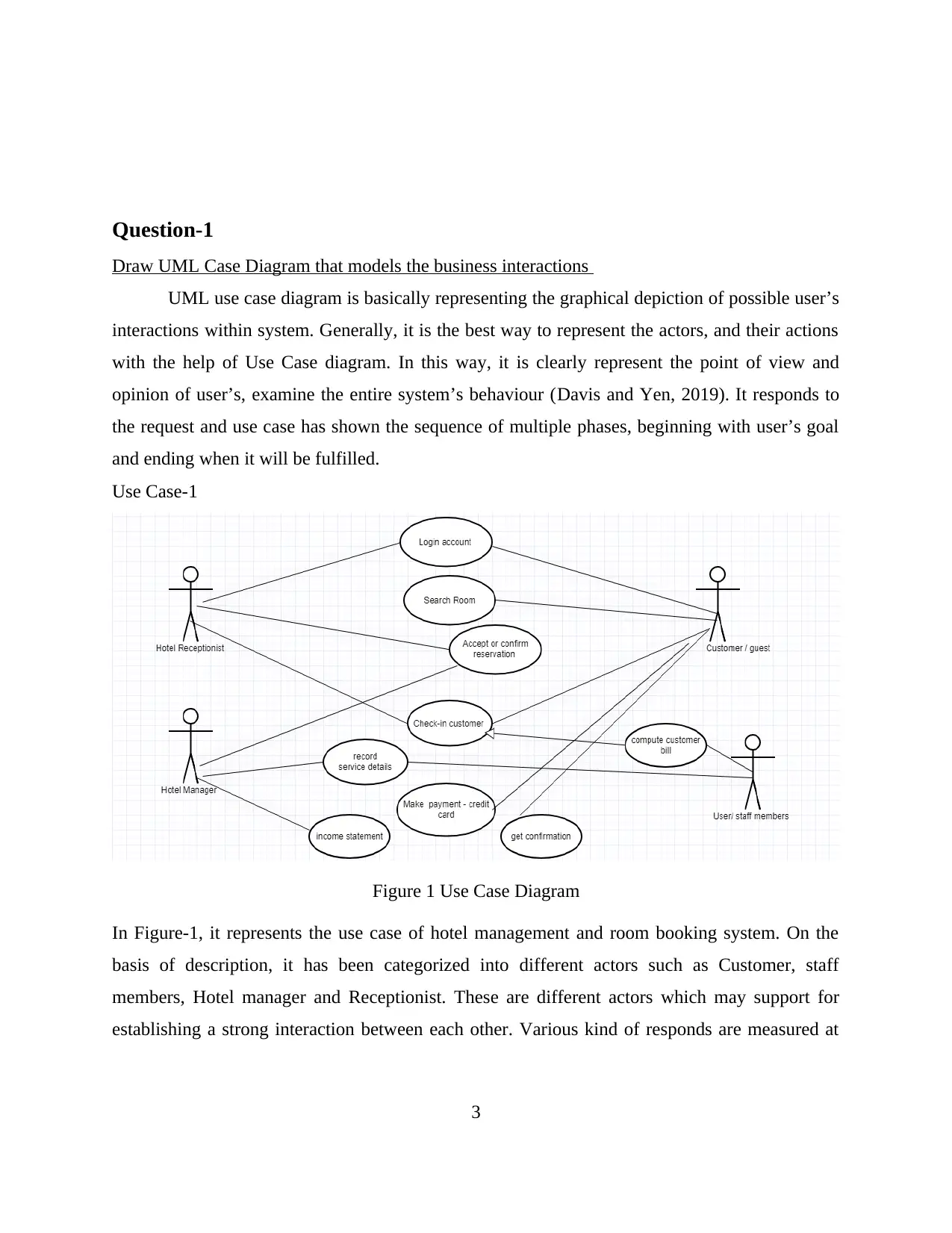
Question-1
Draw UML Case Diagram that models the business interactions
UML use case diagram is basically representing the graphical depiction of possible user’s
interactions within system. Generally, it is the best way to represent the actors, and their actions
with the help of Use Case diagram. In this way, it is clearly represent the point of view and
opinion of user’s, examine the entire system’s behaviour (Davis and Yen, 2019). It responds to
the request and use case has shown the sequence of multiple phases, beginning with user’s goal
and ending when it will be fulfilled.
Use Case-1
Figure 1 Use Case Diagram
In Figure-1, it represents the use case of hotel management and room booking system. On the
basis of description, it has been categorized into different actors such as Customer, staff
members, Hotel manager and Receptionist. These are different actors which may support for
establishing a strong interaction between each other. Various kind of responds are measured at
3
Draw UML Case Diagram that models the business interactions
UML use case diagram is basically representing the graphical depiction of possible user’s
interactions within system. Generally, it is the best way to represent the actors, and their actions
with the help of Use Case diagram. In this way, it is clearly represent the point of view and
opinion of user’s, examine the entire system’s behaviour (Davis and Yen, 2019). It responds to
the request and use case has shown the sequence of multiple phases, beginning with user’s goal
and ending when it will be fulfilled.
Use Case-1
Figure 1 Use Case Diagram
In Figure-1, it represents the use case of hotel management and room booking system. On the
basis of description, it has been categorized into different actors such as Customer, staff
members, Hotel manager and Receptionist. These are different actors which may support for
establishing a strong interaction between each other. Various kind of responds are measured at
3
⊘ This is a preview!⊘
Do you want full access?
Subscribe today to unlock all pages.

Trusted by 1+ million students worldwide
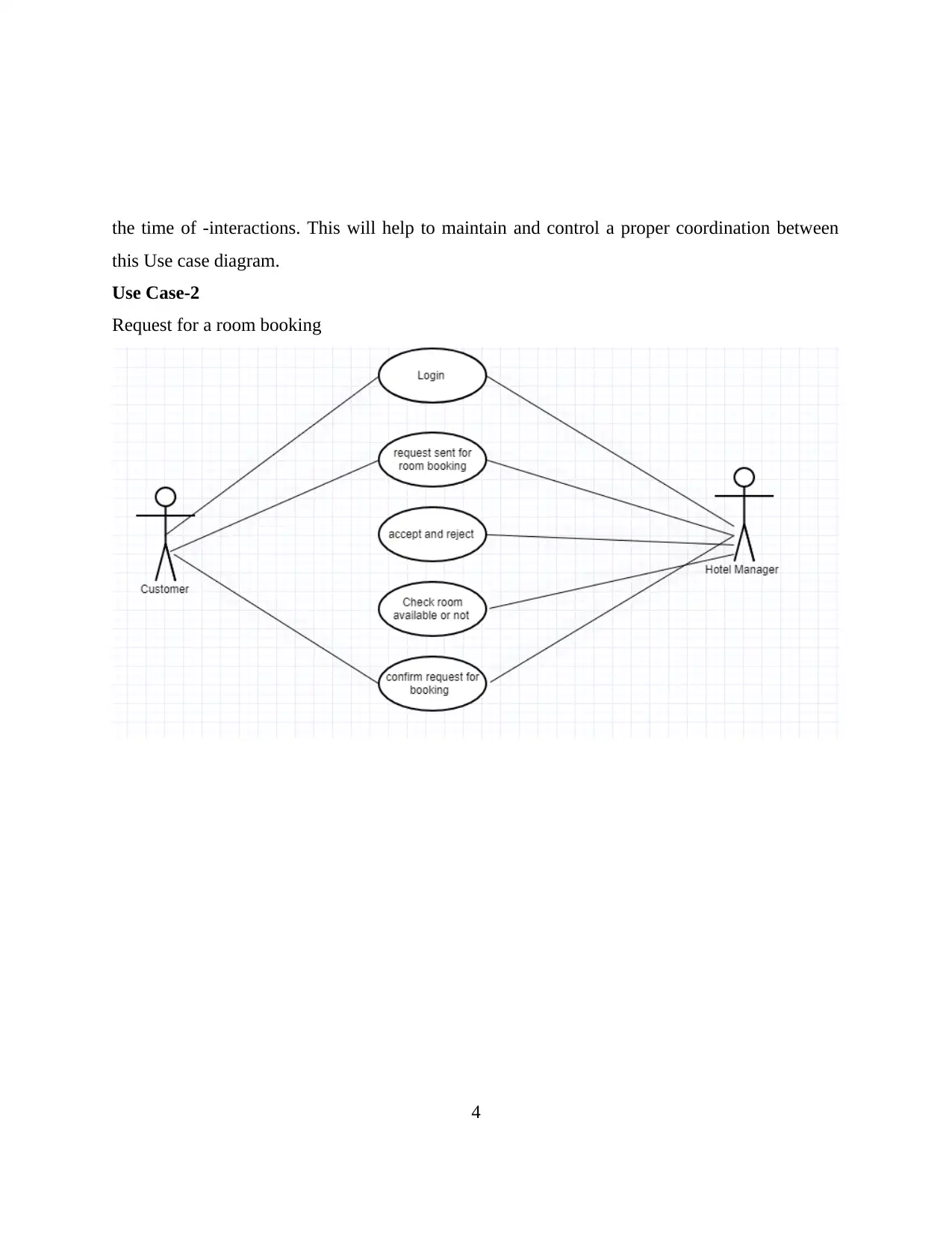
the time of -interactions. This will help to maintain and control a proper coordination between
this Use case diagram.
Use Case-2
Request for a room booking
4
this Use case diagram.
Use Case-2
Request for a room booking
4
Paraphrase This Document
Need a fresh take? Get an instant paraphrase of this document with our AI Paraphraser
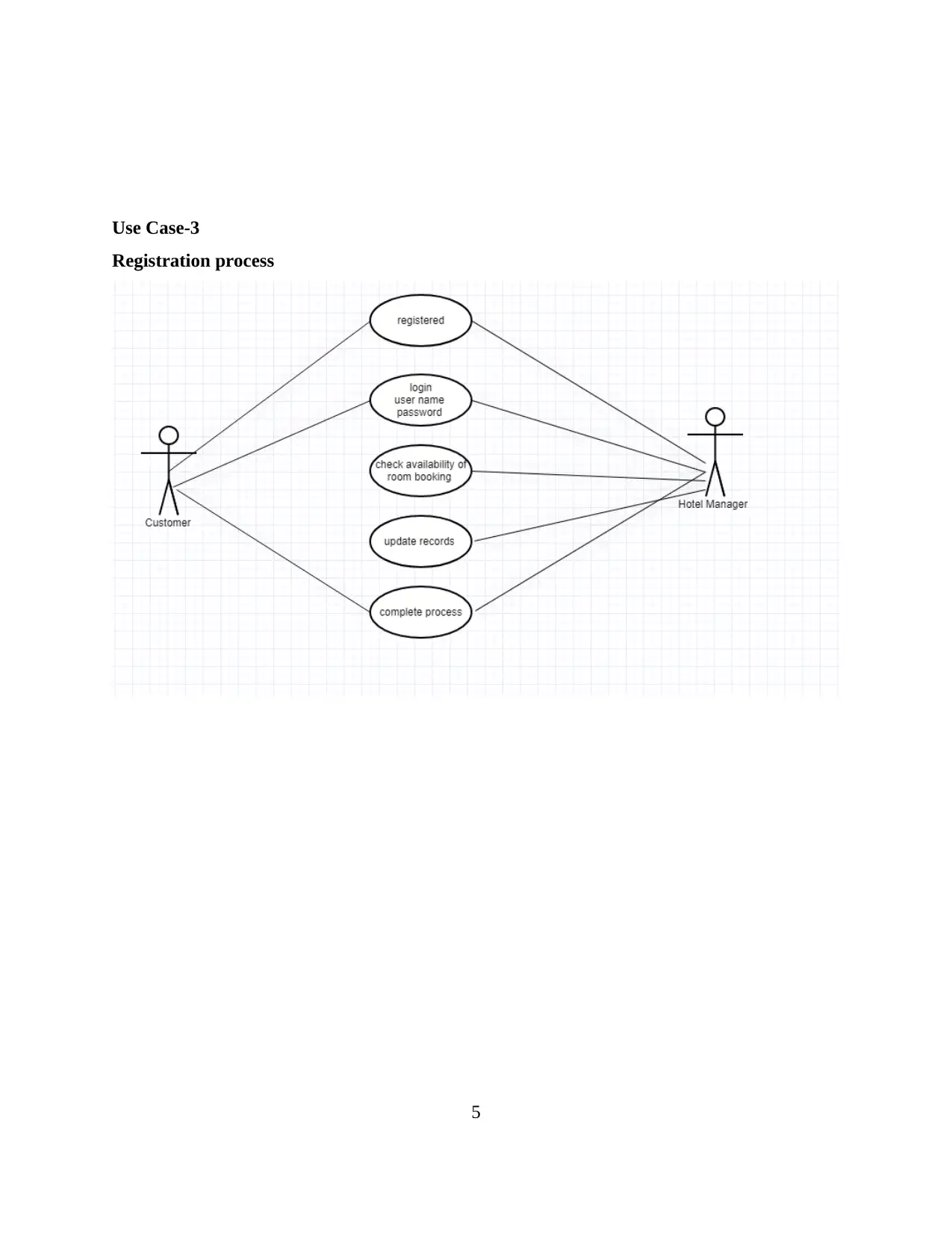
Use Case-3
Registration process
5
Registration process
5
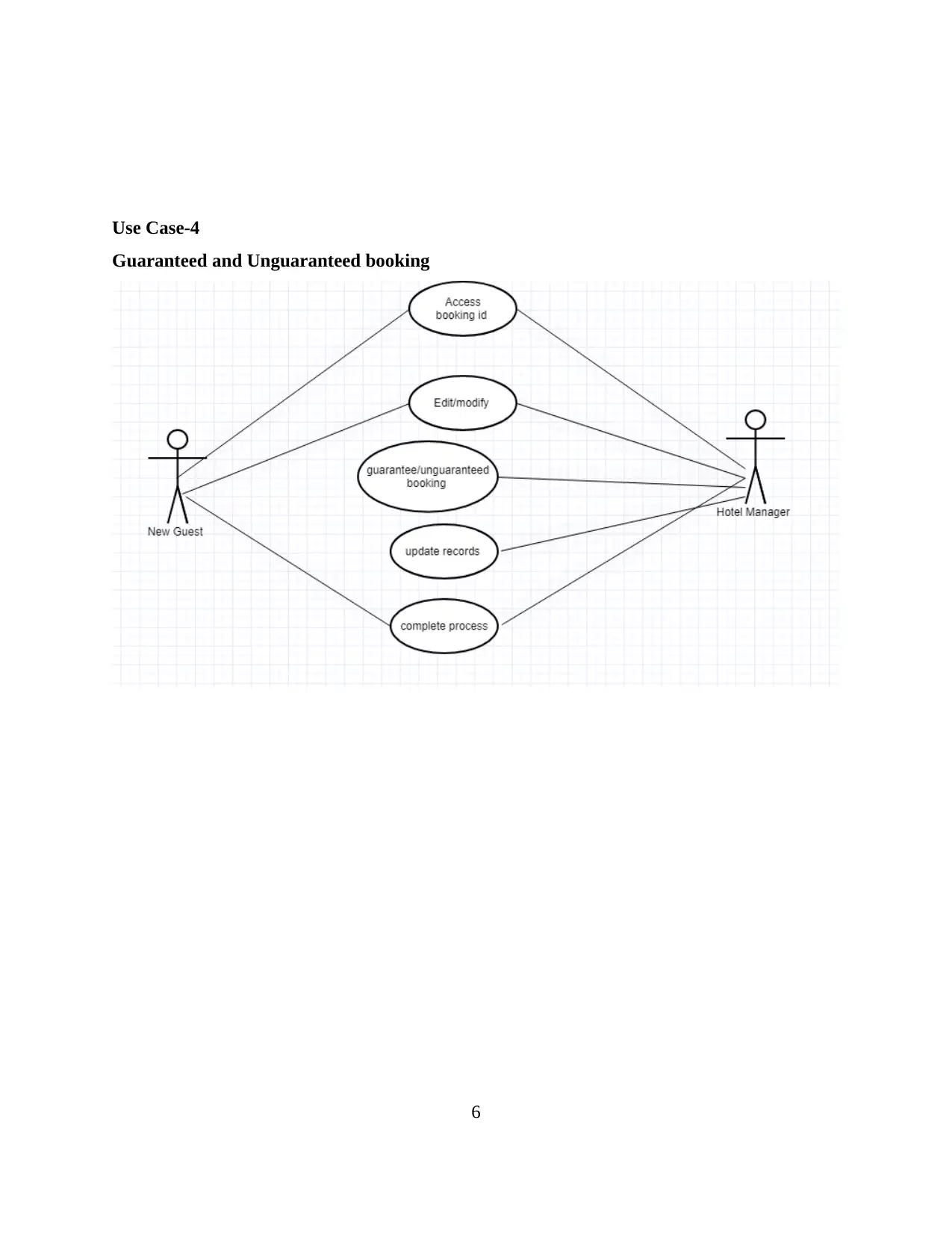
Use Case-4
Guaranteed and Unguaranteed booking
6
Guaranteed and Unguaranteed booking
6
⊘ This is a preview!⊘
Do you want full access?
Subscribe today to unlock all pages.

Trusted by 1+ million students worldwide
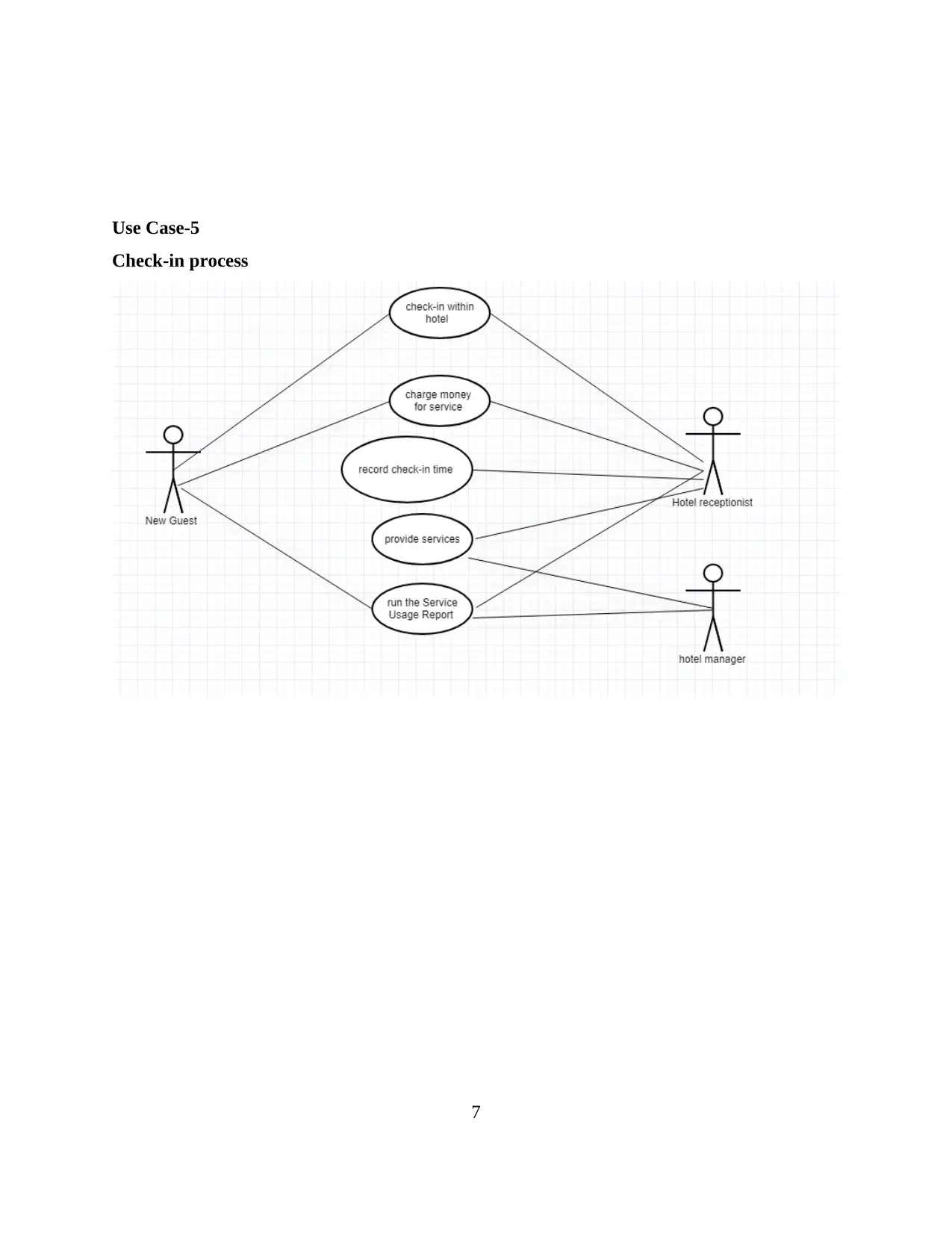
Use Case-5
Check-in process
7
Check-in process
7
Paraphrase This Document
Need a fresh take? Get an instant paraphrase of this document with our AI Paraphraser
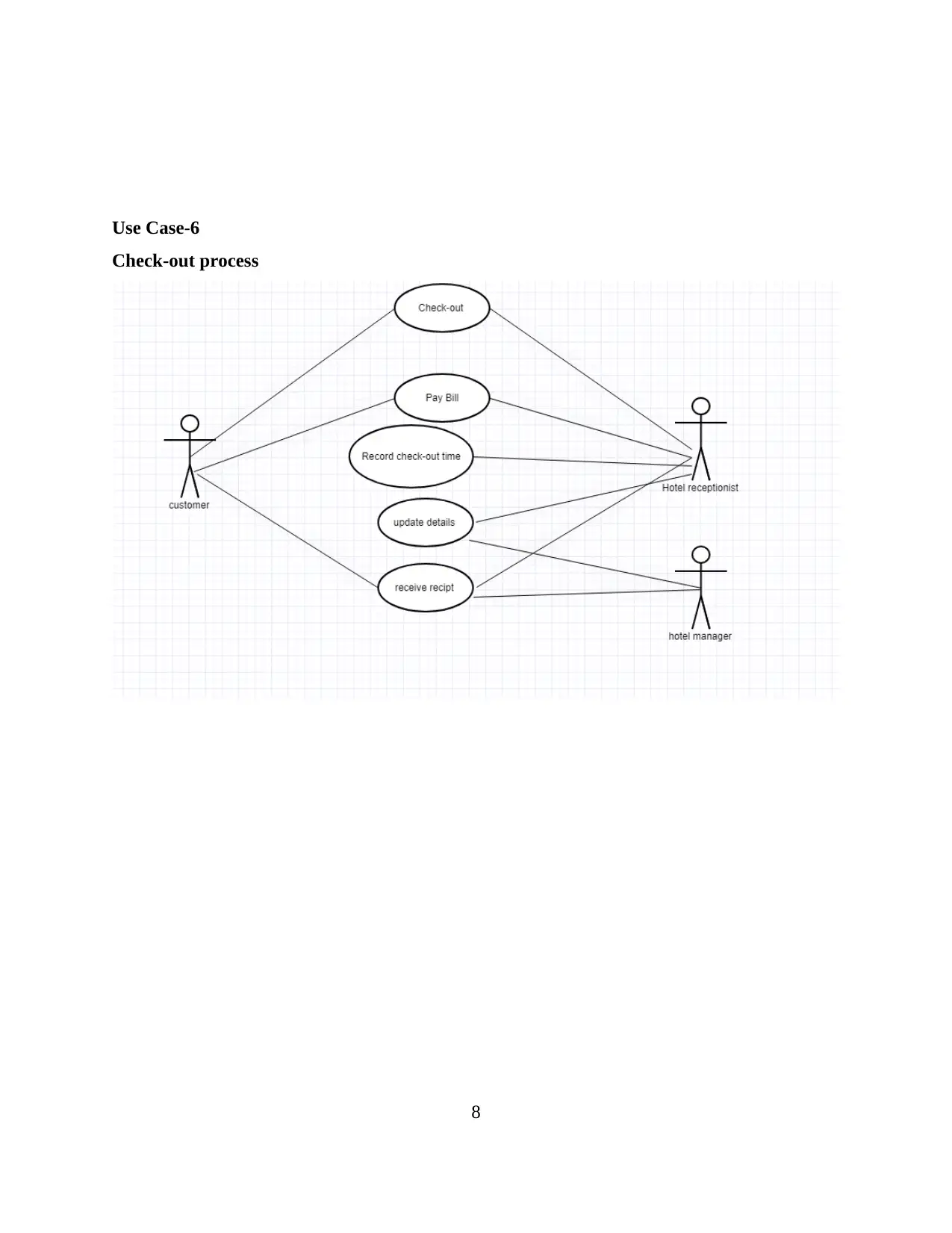
Use Case-6
Check-out process
8
Check-out process
8
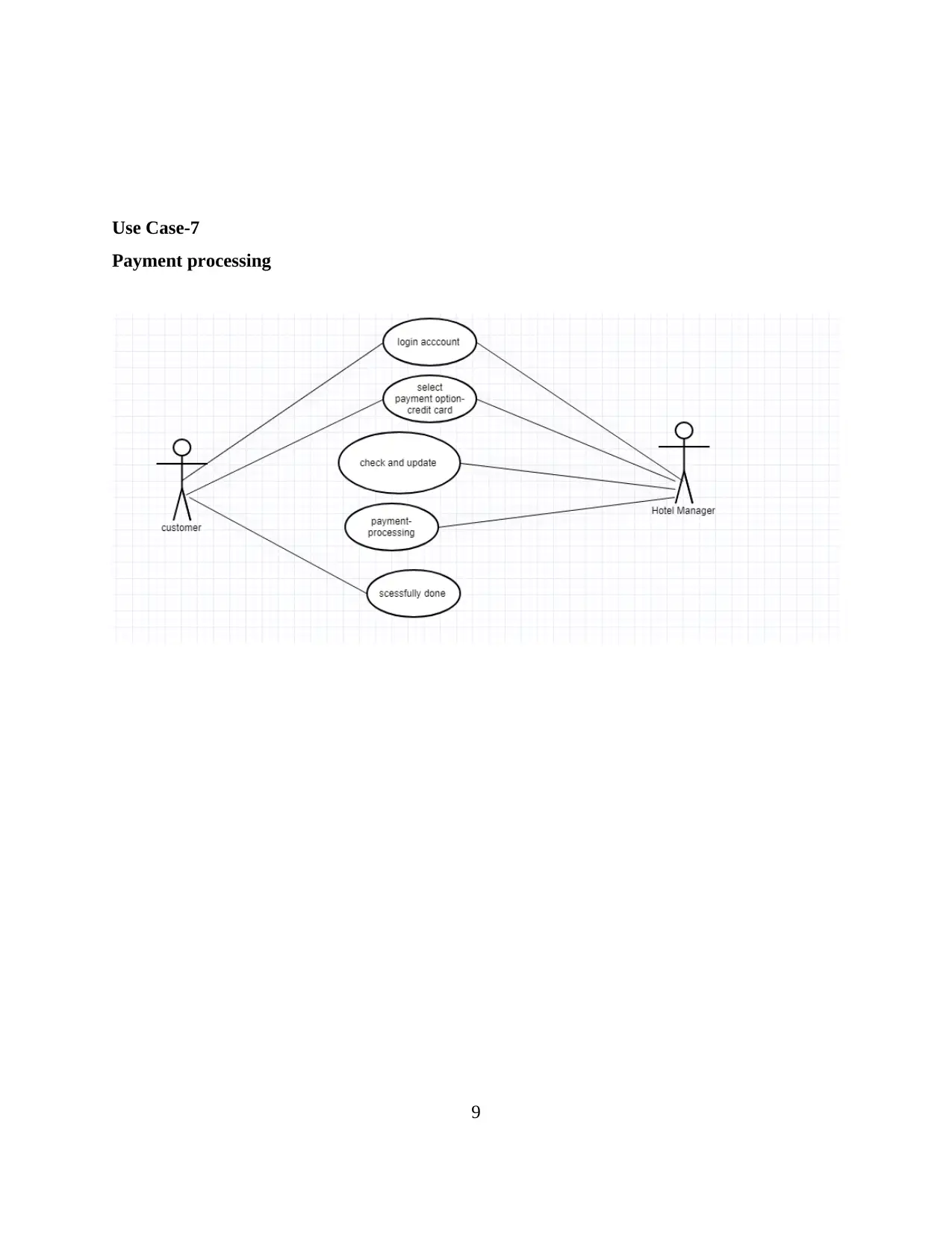
Use Case-7
Payment processing
9
Payment processing
9
⊘ This is a preview!⊘
Do you want full access?
Subscribe today to unlock all pages.

Trusted by 1+ million students worldwide
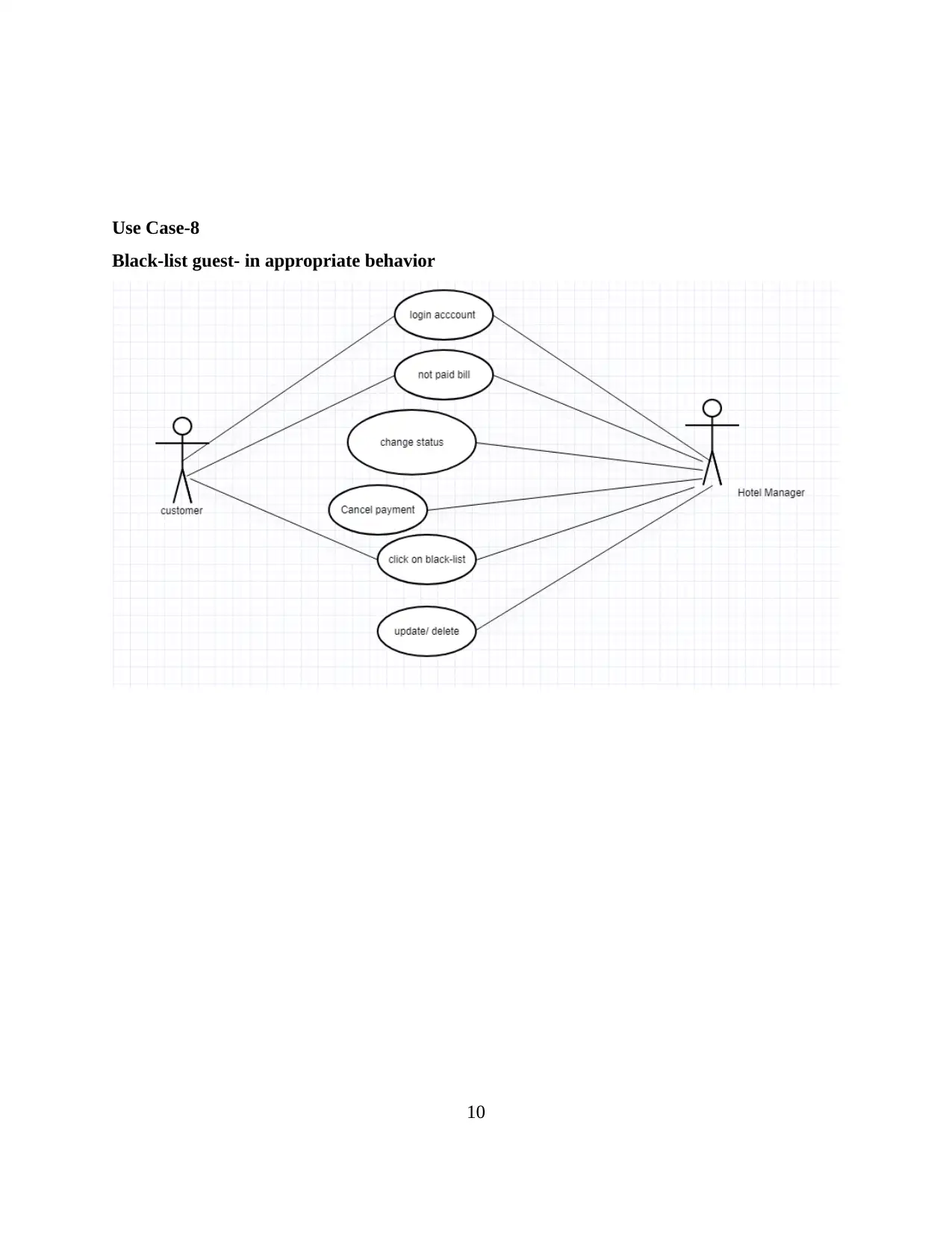
Use Case-8
Black-list guest- in appropriate behavior
10
Black-list guest- in appropriate behavior
10
Paraphrase This Document
Need a fresh take? Get an instant paraphrase of this document with our AI Paraphraser
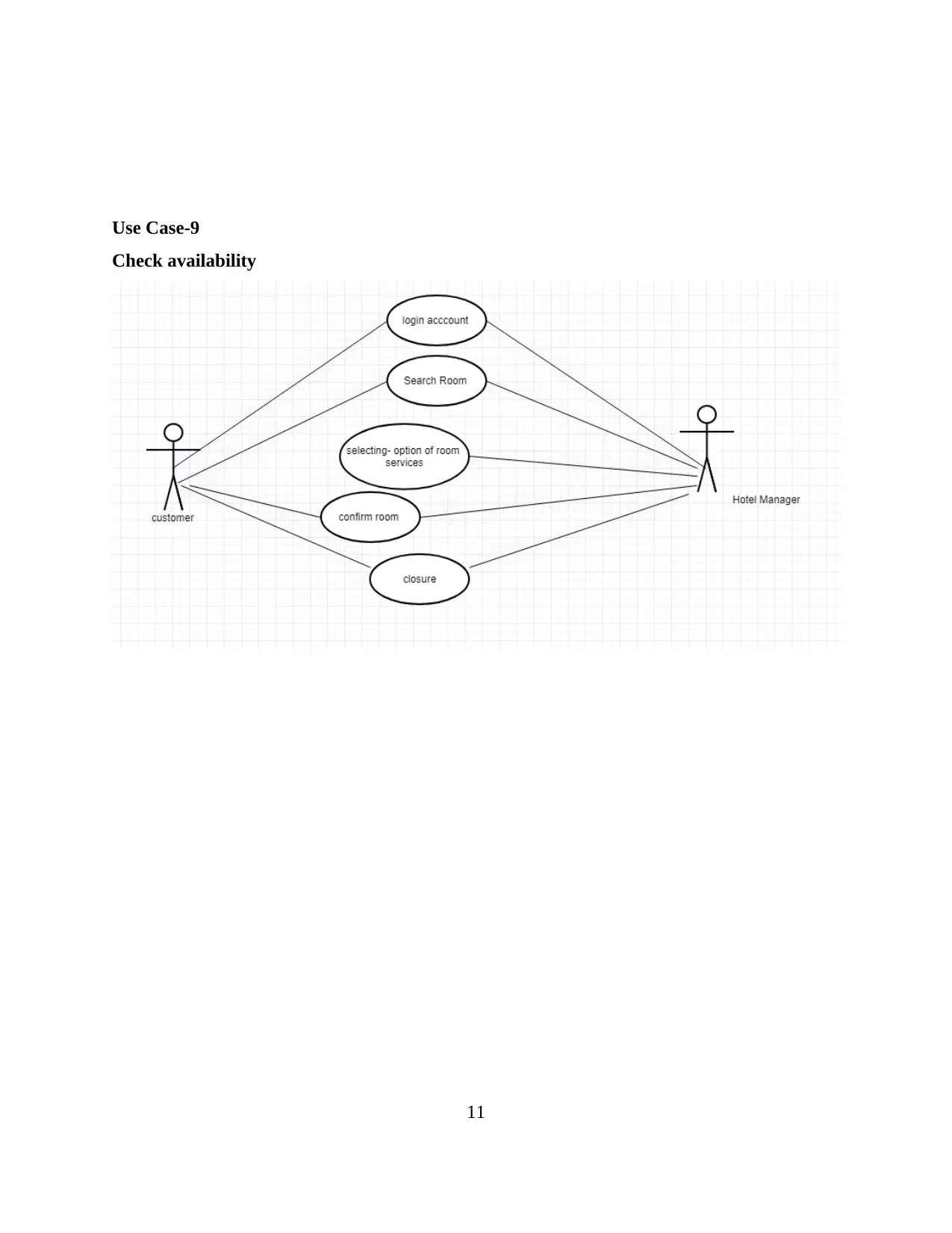
Use Case-9
Check availability
11
Check availability
11
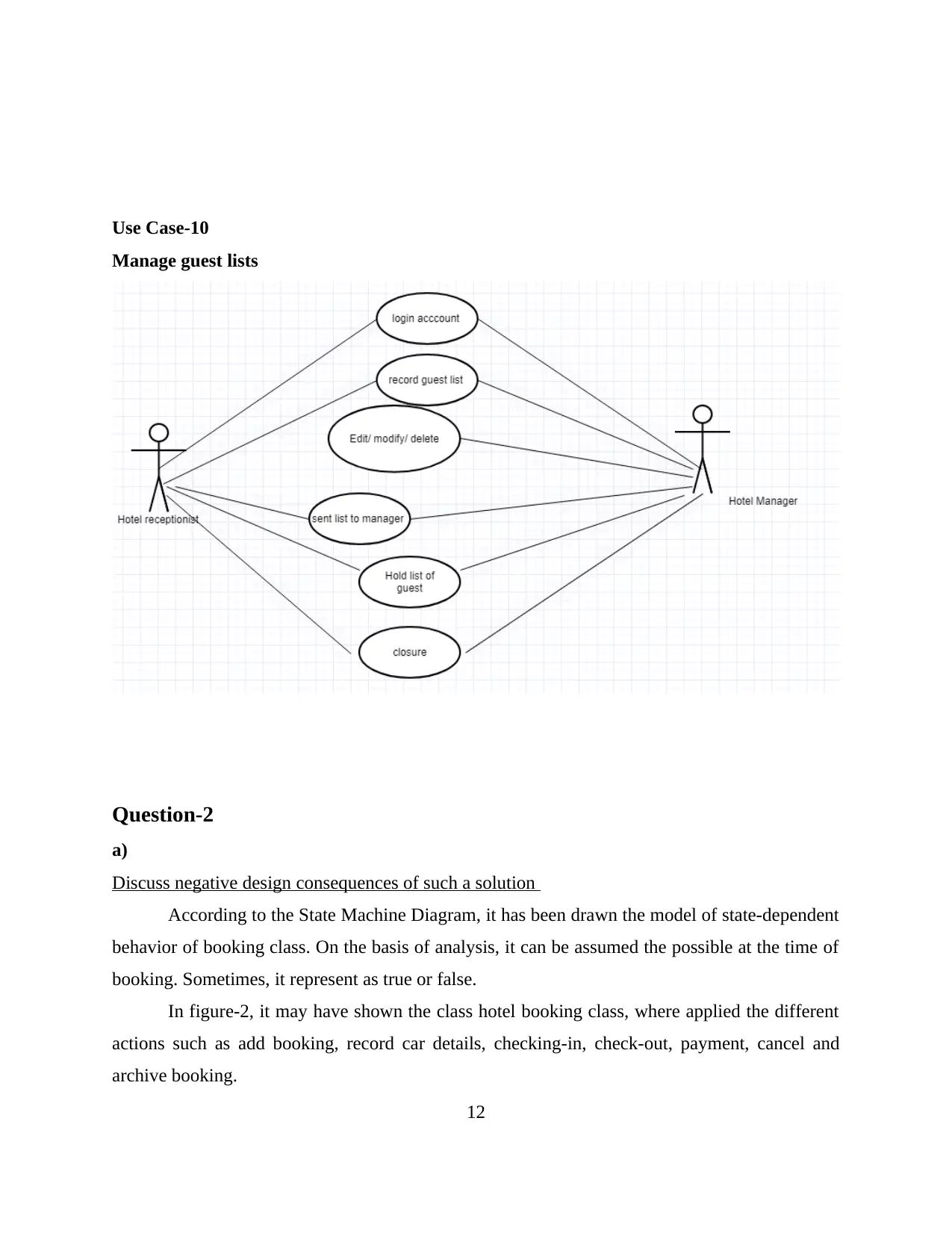
Use Case-10
Manage guest lists
Question-2
a)
Discuss negative design consequences of such a solution
According to the State Machine Diagram, it has been drawn the model of state-dependent
behavior of booking class. On the basis of analysis, it can be assumed the possible at the time of
booking. Sometimes, it represent as true or false.
In figure-2, it may have shown the class hotel booking class, where applied the different
actions such as add booking, record car details, checking-in, check-out, payment, cancel and
archive booking.
12
Manage guest lists
Question-2
a)
Discuss negative design consequences of such a solution
According to the State Machine Diagram, it has been drawn the model of state-dependent
behavior of booking class. On the basis of analysis, it can be assumed the possible at the time of
booking. Sometimes, it represent as true or false.
In figure-2, it may have shown the class hotel booking class, where applied the different
actions such as add booking, record car details, checking-in, check-out, payment, cancel and
archive booking.
12
⊘ This is a preview!⊘
Do you want full access?
Subscribe today to unlock all pages.

Trusted by 1+ million students worldwide
1 out of 22
Related Documents
Your All-in-One AI-Powered Toolkit for Academic Success.
+13062052269
info@desklib.com
Available 24*7 on WhatsApp / Email
![[object Object]](/_next/static/media/star-bottom.7253800d.svg)
Unlock your academic potential
Copyright © 2020–2025 A2Z Services. All Rights Reserved. Developed and managed by ZUCOL.





